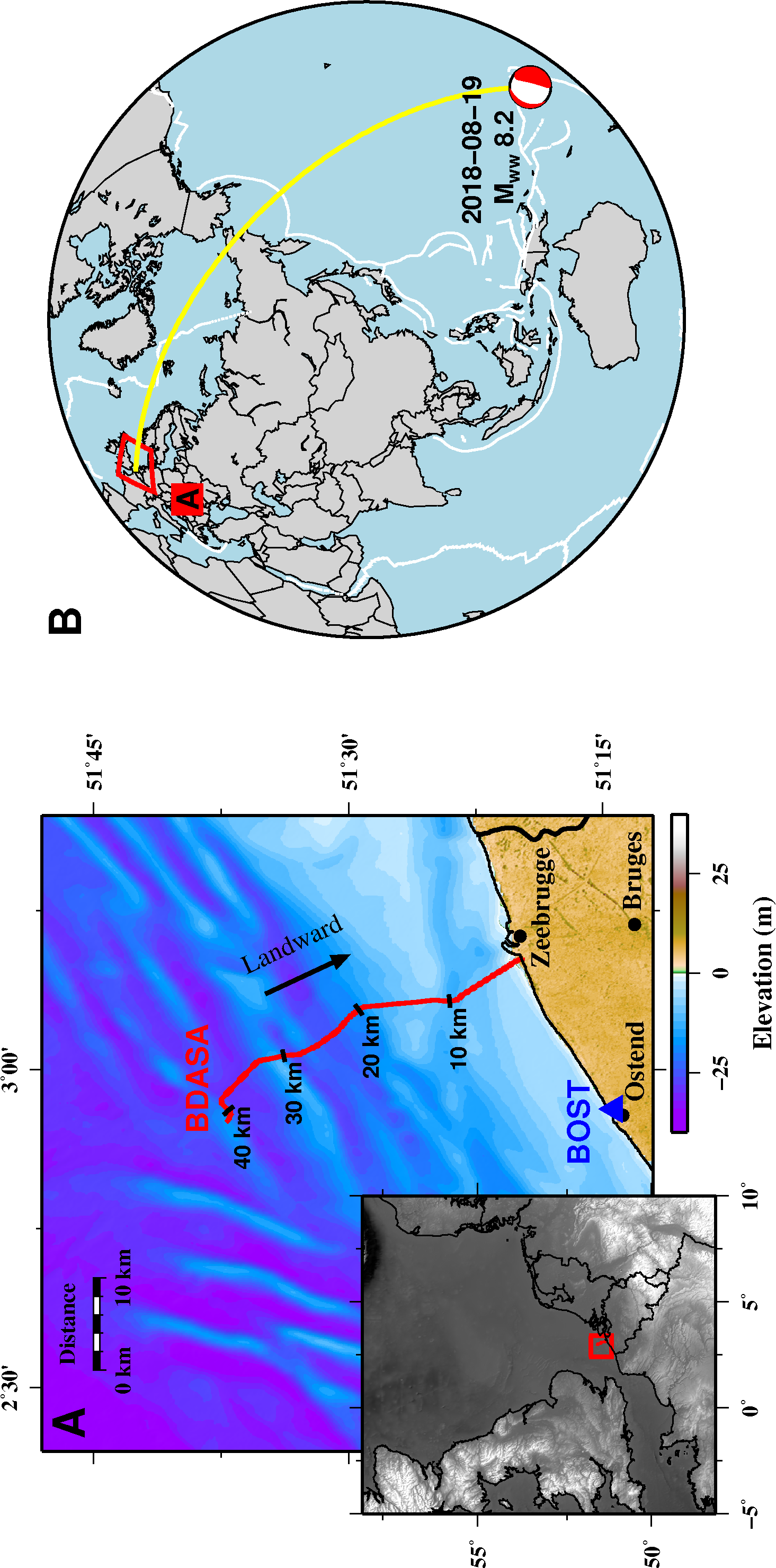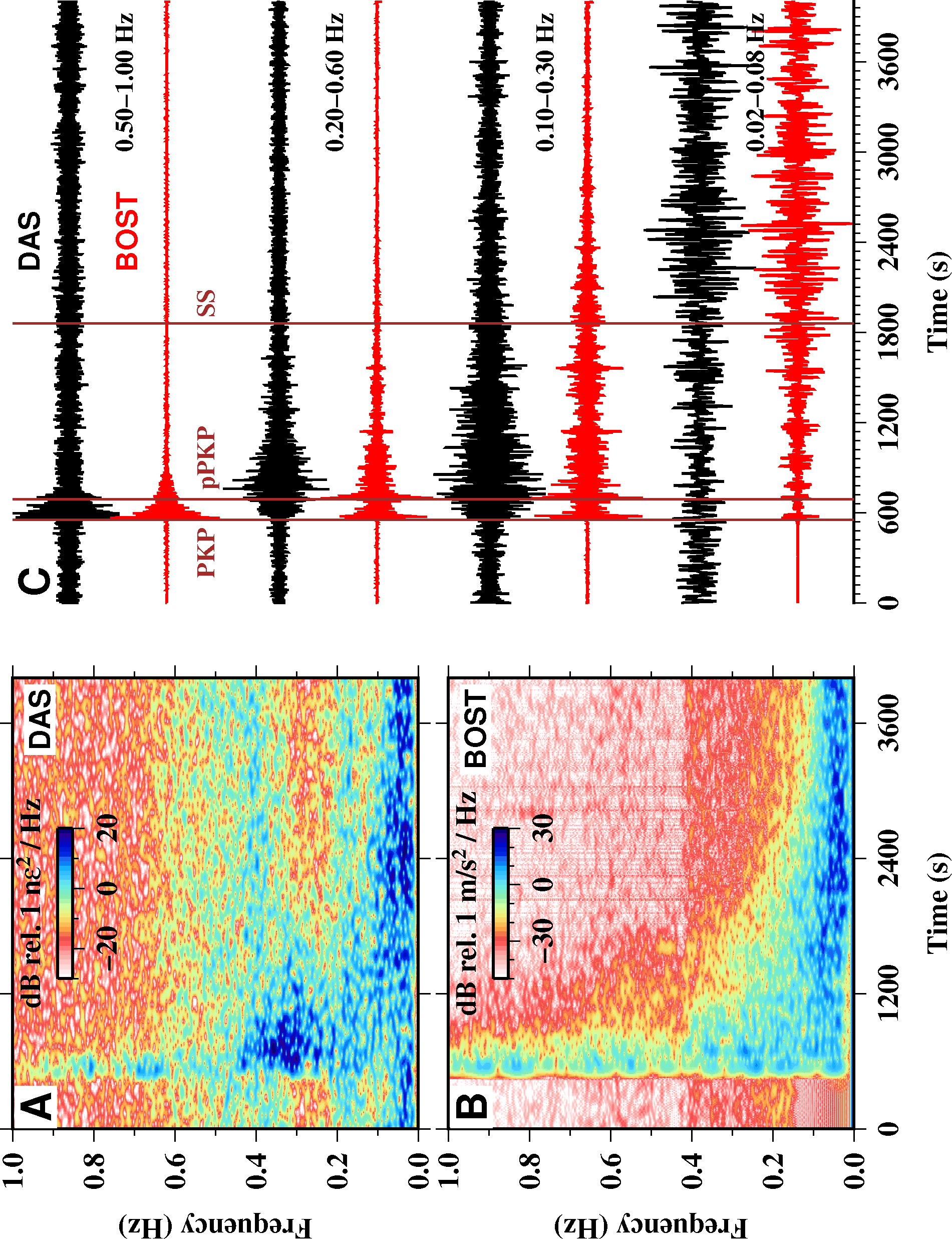Recording earthquakes and ambient noise with ocean-bottom DAS
Distributed acoustic sensing (DAS) permits repurposing of unused (or "dark") fiber optic cables as dense networks of linear seismic strainmeters, with sampling rates >1 kHz and spatial resolution <10 m. Over the past few years, I have worked with DAS datasets from urban fiber networks to longhaul submarine telecommunications cables, investigating the potential of DAS in next-generation seismic networks.
In a study published in Nature Communications in 2019, I collaborated with a photonics research group at the University of Alcala to analyze one of the first ocean-bottom DAS datasets, from a power transmission cable in the North Sea. By estimating the spatial variations in the frequency-directional characteristics of seismic and ocean waves, we demonstrated that nonlinear interaction of opposing ocean wave groups produces seismic waves in-situ, consistent with the classic Longuet-Higgins theory of double-frequency microseism generation. This dataset also captured a M8 deep-focus earthquake from the Fiji region, which was overprinted by strong, shallow-water (<40 m) oceanographic signals and not visible in the raw data. Using spatio-temporal filtering to extract the earthquake's principal phases, we showed that ocean-bottom DAS arrays could be used for global seismic monitoring even in challenging environments where conventional ocean-bottom seismometers struggle.

(A) Location of the DAS array in the Belgian North Sea offshore Zeebrugge. (B) Location of the M8.2 Fiji deep earthquake shown below.

(A,B) Spectrograms for the Belgium DAS array and nearby broadband BOST showing the clear arrival of the first teleseismic P-phase (PKP at this distance) up to 1 Hz. (C) Comparison between the DAS array and BOST over several bands, showing that the pPKP depth phase and principal S-phase are also recovered. In the manuscript we show that the P-waves exhibit low waveform fidelity when compared with BOST even though the arrival time is clear, whereas S-waves exhibit moderate-to-high waveform fidelity.